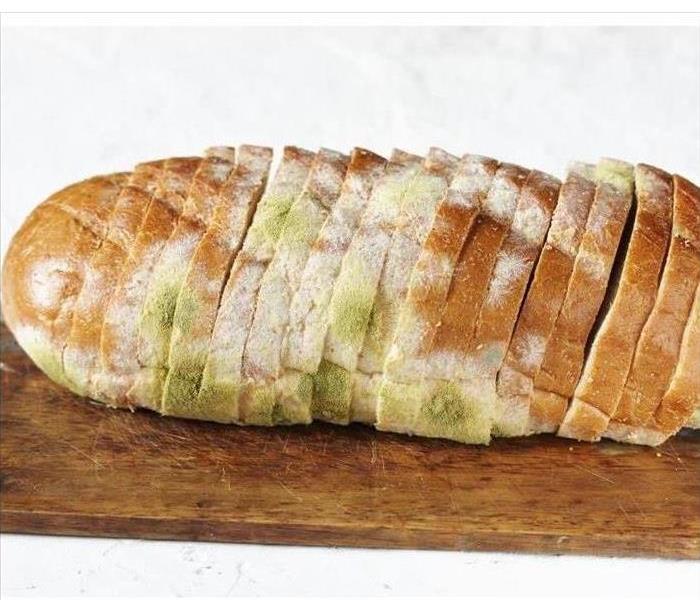Why Does Mold Grow On Bread?
7/31/2022 (Permalink)
Basic Facts About Mold Growth On Bread
Bread is a food staple in most homes. Unfortunately, bread mold causes a lot of food waste. In order to prevent further waste, understand the basic facts about why mold grows on bread.
1. Bread Is Stored in the Perfect Environment for Mold Growth
Bread is often kept in a warm, moist area. Meanwhile, mold grows best in just such a humid environment, sometimes doubling in less than an hour. When there are mold spores in the air — sometimes numbering in the millions — those spores settle on the bread and multiply. That mold will continue to grow as long as there is a food source.
2. Bread Is a Great Food Source for Mold
Mold is part of the fungi family. Fungi use plants and animals as food sources because they cannot get energy directly from the sun like other plants. Bread is a highly desirable food source for mold. Because of this, bread mold is a very common problem in most households.
3. Make Your Bread Last Longer
Mold can grow in colder temperatures too, including inside a refrigerator. Fridge mold simply grows at a slower pace. You cannot avoid mold growth by storing food in the fridge, you can only delay it. To make bread last as long as possible, only keep a few days' worths of bread handy in the cupboard and freeze the rest until needed.
If you discover moldy bread in your cupboard, it is best to wrap the bread in plastic and dispose of it. It is also a good idea to clean the area where the moldy bread was found and make sure it did not spread to nearby items.
Most bread mold is generally harmless to healthy people; however, poisonous mold does exist. If you find that mold and fungus growth is a persistent problem in many parts of your home in Mariemont, OH, consider calling a mold remediation specialist to identify and address the source of the problem.






 24/7 Emergency Service
24/7 Emergency Service
